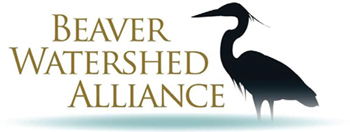BIOASSESSMENT OF THE WEST FORK OF THE WHITE RIVER: A Survey of Fishes, Macroinvertebrates, and Meiofauna
The West Fork-White River has been and continues to be an important water resource for northwest Arkansas. It is used recreationally for fishing and swimming, agriculturally as a source of water for livestock and irrigation of crops, it is mined for gravel, used as a receiving stream for municipal wastewater effluent, and contributes to Beaver Lake which provides water for treatment and distribution to most of northwest Arkansas. While these uses have benefited a large segment of the Arkansas population, they have also contributed to the decline in environmental quality o the river. To facilitate the development of appropriate management protocols an assess restoration potential, we provided a biological assessment of the West Fork-White River to complement studies of its physical and chemical properties. This holistic evaluation can be used presently, and to track changes in the environmental quality of the river in the future. We compared the fish assemblages that we described at eight West Fork-White River sites to historical information dating back to 1894 and to current conditions in other Boston Mountain streams that are less disturbed. We identified 39 fish species in our survey, compared to 63 species from historical records. Nine of the fish species missing in our survey are of particular concern because these species appear consistently in historical records of the West Fork-White River, have been commonly reported in Boston Mountain streams, and two (checkered madtom and yoke darter) are endemic to the White River basin. We noted an increase in abundance of tolerant species and decline of sensitive species, which indicates that environmental stress is influencing the composition of the fish assemblages. The paucity of desirable sportfish and sunfish (e.g. bass, crappie, catfish) also suggests that restoration is needed. However, it is encouraging to note that a headwater site that we intensively sampled compared favorably with least-disturbed streams in the Boston Mountain ecoregion in some measures of environmental health including fish density, biomass, and species richness. The assessment of environmental quality based on macroinvertebrate assemblages is consonant with the assessment based on fishes. Tolerant species again predominated, and the species richness was lower than what would be expected for less disturbed streams in this ecoregion. Meiofauna, a group of stream invertebrates smaller than macroinvertebrates, are of increasing interest to stream ecologists and may become important tools for future bioassessment. While little is known about the influence of anthropogenic disturbance on meiofauna, we noted that the West Fork-White River assemblage was also dominated by tolerant taxa. We provided a baseline of information on this group of organisms at this time for subsequent evaluations. Riparian corridors were in good condition in some upstream reaches, but bank erosion was apparent where buffers were narrow or absent. Further downstream, extensive bank erosion has occurred contributing to open canopies, gravel substrate embedded with fine sediments, and excessive turbidity. The site downstream from the community of West Fork municipal wastewater outfall was in very poor condition and was dominated by tolerant fish and macroinvertebrate species. Our overall assessment is that the biological community has been affected by the cumulative effect of disturbance over time, but that species richness remains moderately high over the course of the river, and headwater reaches have maintained sufficient biological integrity to suggest that restoration efforts at this time could be effective. Attention to the cumulative effects of physical and chemical disturbances on the biological community can provide information for setting benchmarks to evaluate the success of improved management protocols and restoration efforts.
